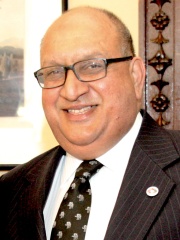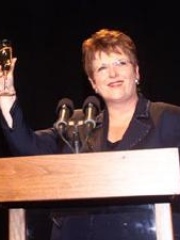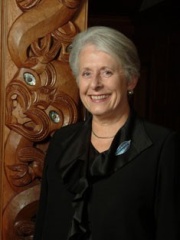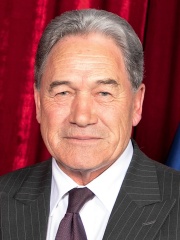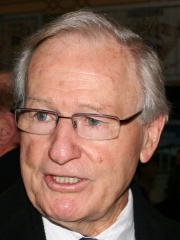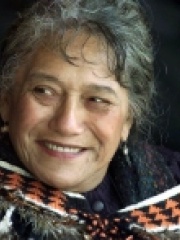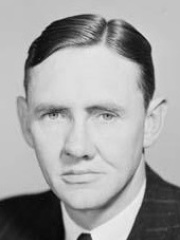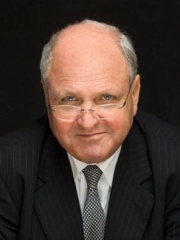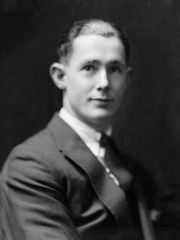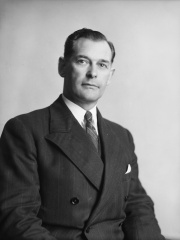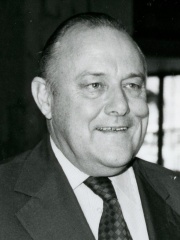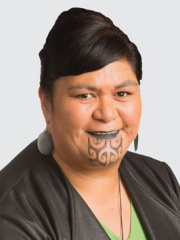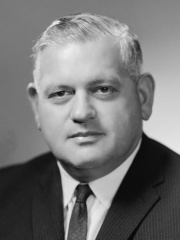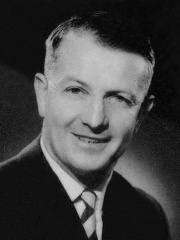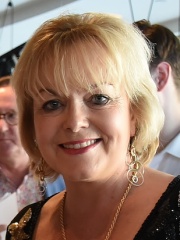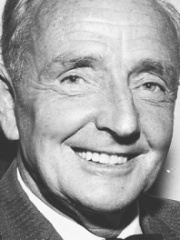
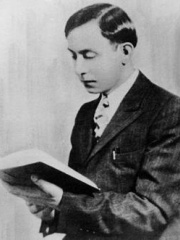
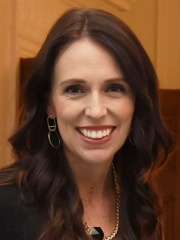
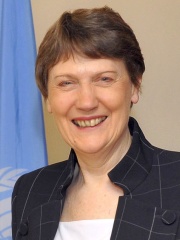
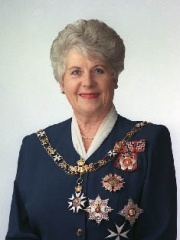
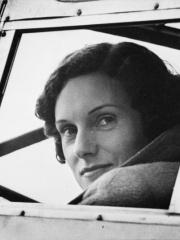
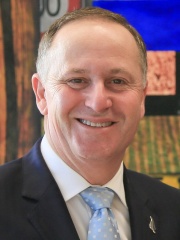

The Most Famous
POLITICIANS from New Zealand
This page contains a list of the greatest New Zealander Politicians. The pantheon dataset contains 15,577 Politicians, 33 of which were born in New Zealand. This makes New Zealand the birth place of the 76th most number of Politicians behind Kazakhstan and Ecuador.
Top 10
The following people are considered by Pantheon to be the top 10 most legendary New Zealander Politicians of all time. This list of famous New Zealander Politicians is sorted by HPI (Historical Popularity Index), a metric that aggregates information on a biography’s online popularity. Visit the rankings page to view the entire list of New Zealander Politicians.

1. Burt Munro (1899 - 1978)
With an HPI of 59.45, Burt Munro is the most famous New Zealander Politician. His biography has been translated into 18 different languages on wikipedia.
Herbert James "Burt" Munro (Bert in his youth; 25 March 1899 – 6 January 1978) was a motorcycle racer from New Zealand, famous for setting an under-1,000 cc world record, at Bonneville, on the 26th of August 1967. This record still stands; Munro was 68 and was riding a 47-year-old machine when he set his last record. Working from his home in Invercargill, he spent 20 years highly modifying his 1920 Indian motorcycle that he had bought that same year. Munro set his first New Zealand speed record in 1938 and later set seven more. He travelled to compete at the Bonneville Salt Flats, attempting to set world speed records. During his ten visits to the salt flats, he set three speed records, one of which still stands. His efforts, and success, are the basis of the film The World's Fastest Indian (2005), starring Anthony Hopkins, and an earlier 1971 short documentary film Burt Munro: Offerings to the God of Speed, both directed by Roger Donaldson.

2. Wallace Fard Muhammad (1893 - 1934)
With an HPI of 59.26, Wallace Fard Muhammad is the 2nd most famous New Zealander Politician. His biography has been translated into 18 different languages.
Wallace Fard Muhammad, also known as Wallace D. Fard or Master Fard Muhammad (; reportedly born February 26, c. 1877 – disappeared c. 1934), was the founder of the Nation of Islam. He arrived in Detroit in 1930 with an ambiguous background and several aliases, and proselytized idiosyncratic Islamic teachings to the city's black population. In 1934, he disappeared from public record, and Elijah Muhammad succeeded him as leader of the Nation of Islam.

3. Jacinda Ardern (1980 - )
With an HPI of 51.24, Jacinda Ardern is the 3rd most famous New Zealander Politician. Her biography has been translated into 86 different languages.
Dame Jacinda Kate Laurell Ardern ( jə-SIN-də ar-DURN; born 26 July 1980) is a New Zealand former politician who served as the 40th prime minister of New Zealand and leader of the Labour Party from 2017 to 2023. She was a Labour member of Parliament (MP) as a list MP from 2008 to 2017, and for Mount Albert from 2017 to 2023. Born in Hamilton, Ardern grew up in Morrinsville and Murupara. She joined the Labour Party at the age of 17. After graduating from the University of Waikato in 2001, Ardern worked as a researcher in the office of Prime Minister Helen Clark. She later worked in London as an adviser in the Cabinet Office during Tony Blair's premiership. In 2008, Ardern was elected president of the International Union of Socialist Youth. Ardern was first elected as an MP in the 2008 general election, when Labour lost power after nine years. She was later elected to represent the Mount Albert electorate in a by-election on 25 February 2017. Ardern was unanimously elected as deputy leader of the Labour Party on 1 March 2017, after the resignation of Annette King. Exactly five months later, with an election due, Labour's leader Andrew Little resigned after a historically low opinion polling result for the party, with Ardern elected unopposed as leader in his place. Labour's support increased rapidly after Ardern became leader, and she led her party to gain 14 seats at the 2017 general election on 23 September, winning 46 seats to the National Party's 56. After negotiations, New Zealand First chose to enter a minority coalition government with Labour, supported by the Green Party, with Ardern as prime minister. She was sworn in by the governor-general on 26 October 2017. She became the world's youngest female head of government at age 37. Ardern gave birth to her daughter on 21 June 2018, making her the world's second elected head of government to give birth while in office (after Benazir Bhutto). Ardern describes herself as a social democrat and a progressive. The Sixth Labour Government faced challenges from the New Zealand housing crisis, child poverty, and social inequality. In March 2019, in the aftermath of the Christchurch mosque shootings, Ardern reacted by rapidly introducing strict gun laws, winning her wide recognition. Throughout 2020 she led New Zealand's response to the COVID-19 pandemic, for which she won praise for New Zealand being one of the few Western nations to successfully contain the virus. It is estimated that her government's actions saved as many as 80,000 lives. Ardern moved the Labour Party further to the centre towards the October 2020 general election, promising to cut spending during the remainder of the COVID-19 recession. She led the Labour Party to a landslide victory, gaining an overall majority of 65 seats in Parliament, the first time a majority government had been formed since the introduction of a proportional representation system in 1996. In 2022, domestic popularity for Ardern and her policies fell considerably. On 19 January 2023, Ardern announced she would resign as Labour leader. Following the unopposed election of Chris Hipkins as her successor, she resigned as leader of the Labour Party on 22 January and submitted her resignation as prime minister to the governor-general on 25 January.

4. Helen Clark (1950 - )
With an HPI of 50.19, Helen Clark is the 4th most famous New Zealander Politician. Her biography has been translated into 61 different languages.
Helen Elizabeth Clark (born 26 February 1950) is a New Zealand politician who served as the 37th prime minister of New Zealand from 1999 to 2008, and was the administrator of the United Nations Development Programme from 2009 to 2017. She was New Zealand's fifth-longest-serving prime minister, and the second woman to hold that office. Clark was brought up on a farm outside Hamilton. She entered the University of Auckland in 1968 to study politics, and became active in the New Zealand Labour Party. After graduating she lectured in political studies at the university. Clark entered local politics in 1974 in Auckland but was not elected to any position. Following one unsuccessful attempt, she was elected to Parliament in 1981 as the member for Mount Albert, an electorate she represented until 2009. Clark held numerous Cabinet positions in the Fourth Labour Government, including minister of housing, minister of health and minister of conservation. She was the 11th deputy prime minister of New Zealand from 1989 to 1990 serving under prime ministers Geoffrey Palmer and Mike Moore. After Labour's narrow defeat in the 1993 election, Clark challenged Moore for leadership of the party and won, becoming the leader of the Opposition. Following the 1999 election, Labour formed a governing coalition, and Clark was sworn in as prime minister on 10 December 1999. Clark led the Fifth Labour Government, which implemented several major economic initiatives including Kiwibank, the New Zealand Superannuation Fund, the New Zealand Emissions Trading Scheme and KiwiSaver. Her government also introduced the Foreshore and Seabed Act 2004, which caused major controversy. In foreign affairs, Clark sent troops to the Afghanistan War, but did not contribute combat troops to the Iraq War, and ordered a deployment to the 2006 East Timorese crisis. She was ranked by Forbes as the 20th-most powerful woman in the world in 2006. She advocated a number of free-trade agreements with major trading partners, including becoming the first developed nation to sign such an agreement with China. After three successive electoral victories, her government was defeated in the 2008 election; Clark resigned as Prime Minister and party leader on 19 November 2008. She was succeeded as prime minister by John Key of the National Party, and as leader of the Labour Party by Phil Goff. Clark resigned from Parliament in April 2009 to become the first female head of the United Nations Development Programme (UNDP). In 2016, she stood for the position of secretary-general of the United Nations, but was unsuccessful. She left her UNDP administrator post on 19 April 2017 at the end of her second four-year term and was succeeded by Achim Steiner. In 2019, Clark became the patron of the Helen Clark Foundation.
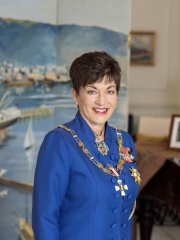
5. Patsy Reddy (1954 - )
With an HPI of 50.09, Patsy Reddy is the 5th most famous New Zealander Politician. Her biography has been translated into 31 different languages.
Dame Patricia Lee Reddy (born 17 May 1954) is a New Zealand lawyer and businesswoman who served as the 21st governor-general of New Zealand from 2016 to 2021. Before becoming governor-general, Reddy was a partner of a law firm, headed a major review of intelligence agencies, held multiple directorships, chaired the New Zealand Film Commission and worked as a chief negotiator on Treaty of Waitangi settlements. Prime Minister John Key advised the Queen to appoint Reddy to succeed Sir Jerry Mateparae as the Queen's representative, and Reddy was sworn in for a five-year term on 28 September 2016.

6. Catherine Tizard (1931 - 2021)
With an HPI of 48.44, Catherine Tizard is the 6th most famous New Zealander Politician. Her biography has been translated into 18 different languages.
Dame Catherine Anne Tizard (née Maclean; 4 April 1931 – 31 October 2021) was a New Zealand politician who served as mayor of Auckland City from 1983 to 1990, and the 16th governor-general of New Zealand from 1990 to 1996. She was the first woman to hold either office.

7. Jean Batten (1909 - 1982)
With an HPI of 48.13, Jean Batten is the 7th most famous New Zealander Politician. Her biography has been translated into 28 different languages.
Jane Gardner Batten (15 September 1909 – 22 November 1982), commonly known as Jean Batten, was a New Zealand aviator who made several record-breaking flights – including the first solo flight from England to New Zealand in 1936. Born in Rotorua, Batten went to England to learn to fly. She made two unsuccessful attempts to fly from England to Australia solo before achieving the feat in May 1934, taking just under 15 days to fly the distance in a Gipsy Moth biplane. The flight set the record for a woman's solo flight between the two countries. After a publicity tour around Australia and New Zealand, she flew the Gipsy Moth back to England, setting the solo women's record for the return flight from Australia to England. She also became the first woman to fly solo from England to Australia and back again. In November 1935, she set the absolute record of 61 hours, 15 minutes, for flying from England to Brazil. During this flight, in a Percival Gull Six monoplane, she completed the fastest crossing of the South Atlantic Ocean and was the first woman to make the England–South America flight. The pinnacle of her flying achievements came in October 1936, when she flew her Gull from England to New Zealand, covering the distance in a little over 11 days, an absolute record for 44 years. The following year she made her last major flight, flying from Australia to England to set a new solo record. During the Second World War, Batten unsuccessfully applied to join the Air Transport Auxiliary. Instead, she joined the short-lived Anglo-French Ambulance Corps and worked in the munitions industry. After the war, Batten lived a reclusive and nomadic life with her mother, Ellen Batten, in Europe and the Caribbean. Ellen, a strong personality who dominated her daughter, died in Tenerife in 1967, and soon afterwards Batten returned to public life with several appearances related to aviation and her records. Her death in Mallorca in November 1982 from complications of a dog bite went unnoticed until discovered by a journalist in September 1987.

8. John Key (1961 - )
With an HPI of 44.40, John Key is the 8th most famous New Zealander Politician. His biography has been translated into 63 different languages.
Sir John Phillip Key (born 9 August 1961) is a New Zealand retired politician who served as the 38th prime minister of New Zealand from 2008 to 2016 and as leader of the New Zealand National Party from 2006 to 2016. After resigning from both posts in December 2016 and leaving politics, Key was appointed to the board of directors and role of chairman in several New Zealand corporations. After his father died when he was eight, Key was raised by his single mother in a state-house in the Christchurch suburb of Bryndwr. He attended the University of Canterbury and graduated in 1981 with a Bachelor of Commerce. He began a career in the foreign exchange market in New Zealand before moving overseas to work for Merrill Lynch, in which he became head of global foreign exchange in 1995, a position he would hold for six years. In 1999 he was appointed a member of the Foreign Exchange Committee of the Federal Reserve Bank of New York until leaving in 2001. Key entered the New Zealand Parliament representing the Auckland electorate of Helensville as one of the few new National members of parliament in the election of 2002 following National's significant defeat of that year. In 2004, he was appointed Finance Spokesman for National and eventually succeeded Don Brash as the National Party leader in 2006. After two years as leader of the Opposition, Key led his party to victory at the November 2008 general election. He was subsequently sworn in as prime minister on 19 November 2008. The National government went on to win two more general elections under his leadership: in November 2011 and September 2014. Key was expected to contest for a fourth term of office at the 2017 general election, but on 5 December 2016 he resigned as prime minister and leader of the National Party. He was succeeded by Bill English on 12 December 2016. As prime minister, Key led the Fifth National Government of New Zealand which entered government at the beginning of the late-2000s recession in 2008. He was described as having socially liberal but fiscally conservative views and policies. In his first term, Key's government implemented a GST rise and personal tax cuts, while enacting several austerity measures. His government refused to renew license agreements for multiple television channels, including TVNZ 6, TVNZ 7, Kidzone and Heartland, while reducing funding for Radio New Zealand in real terms. In February 2011, after a major earthquake in Christchurch the nation's second largest city significantly affected the national economy, the government formed the Canterbury Earthquake Recovery Authority. In its second term, Key's government implemented a policy of partial privatisation of five state-owned enterprises, while voters in a citizens-initiated referendum on the issue were 2 to 1 opposed to the policy. He also faced a severe housing crisis, especially in Auckland, and was widely criticised for a perceived lack of action. In foreign policy, Key withdrew New Zealand Defence Force personnel from their deployment in the war in Afghanistan, signed the Wellington Declaration with the United States and pushed for more nations to join the Trans-Pacific Partnership.

9. Bill English (1961 - )
With an HPI of 43.77, Bill English is the 9th most famous New Zealander Politician. Her biography has been translated into 51 different languages.
Sir Simon William English (born 30 December 1961) is a New Zealand former National Party politician who served as the 39th prime minister of New Zealand from 2016 to 2017. He had previously served as the 17th deputy prime minister of New Zealand and minister of finance from 2008 to 2016 under John Key and the Fifth National Government. A farmer and public servant before entering politics, English was elected to the New Zealand Parliament in 1990 as the National Party's candidate in the Wallace electorate. He was elevated to Cabinet in 1996 and in 1999 was made minister of finance, although he served for less than a year due to his party's loss at the 1999 general election. In October 2001, English replaced Jenny Shipley as the leader of the National Party (and consequently as Leader of the Opposition). He led the party to its worst defeat at the 2002 general election, and as a consequence, in October 2003 he was replaced as leader by Don Brash. In November 2006, after Brash's resignation, English became deputy leader under John Key. After National's victory at the 2008 general election, he became deputy prime minister and was also made minister of finance for the second time. Under English's direction New Zealand's economy maintained steady growth during National's three terms of government. He became a list-only MP after stepping down as an electorate MP at the 2014 general election. John Key resigned as leader of the National Party and prime minister in December 2016. English won the resulting leadership election unopposed and was sworn in as prime minister on 12 December 2016. His tenure was only ten months, and included a three-month election campaign. In the 2017 general election, National won the largest number of seats but fell short of a majority. The parties holding the balance of power declined to support the existing government, and English was subsequently replaced as prime minister by Jacinda Ardern, leader of the Labour Party. English initially continued on as Leader of the Opposition, but resigned as leader of the National Party on 27 February 2018 and left parliament two weeks later.
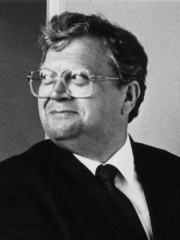
10. David Lange (1942 - 2005)
With an HPI of 43.72, David Lange is the 10th most famous New Zealander Politician. His biography has been translated into 29 different languages.
David Russell Lange ( LONG-ee; 4 August 1942 – 13 August 2005) was a New Zealand politician who served as the 32nd prime minister of New Zealand from 1984 to 1989. Lange was born and brought up in Ōtāhuhu, the son of a physician. He became a lawyer, and represented poor and struggling people in civil rights causes in the rapidly changing Auckland of the 1970s. After serving as legal advisor to the Polynesian Panthers, Lange was first elected to the New Zealand Parliament in the Mangere by-election of 1977. He became a prominent debater within parliament, and soon gained a reputation for cutting wit (sometimes directed against himself) and eloquence. Lange became the leader of the Labour Party and leader of the Opposition in 1983, succeeding Bill Rowling. When Prime Minister Robert Muldoon called an election for July 1984 Lange led his party to a landslide victory, becoming, at the age of 41, New Zealand's youngest prime minister of the 20th century. Lange took various measures to deal with the economic problems he had inherited from the previous government. Some of the measures he took were controversial; the free-market ethos of the Fourth Labour Government did not always conform to traditional expectations of a social-democratic party. He also fulfilled a campaign promise to deny New Zealand's port facilities to nuclear-armed and nuclear-powered vessels, making New Zealand a nuclear-free zone. Lange and his party were re-elected in August 1987; he resigned two years later and was succeeded by his deputy, Geoffrey Palmer. He retired from parliament in 1996, and died in 2005 from renal failure and blood disease at the age of 63. Prime Minister Helen Clark described New Zealand's nuclear-free legislation as his legacy.
Pantheon has 33 people classified as politicians born between 1893 and 1982. Of these 33, 18 (54.55%) of them are still alive today. The most famous living politicians include Jacinda Ardern, Helen Clark, and Patsy Reddy. The most famous deceased politicians include Burt Munro, Wallace Fard Muhammad, and Catherine Tizard. As of April 2022, 7 new politicians have been added to Pantheon including Juliet Mitchell, Tūheitia Paki, and Nanaia Mahuta.
Living Politicians
Go to all Rankings
Jacinda Ardern
1980 - Present
HPI: 51.24
Helen Clark
1950 - Present
HPI: 50.19
Patsy Reddy
1954 - Present
HPI: 50.09
John Key
1961 - Present
HPI: 44.40
Bill English
1961 - Present
HPI: 43.77
Anand Satyanand
1944 - Present
HPI: 42.40
Juliet Mitchell
1940 - Present
HPI: 42.28
Tūheitia Paki
1955 - Present
HPI: 42.19
Jenny Shipley
1952 - Present
HPI: 40.77
Silvia Cartwright
1943 - Present
HPI: 40.60
Winston Peters
1945 - Present
HPI: 40.38
Jim Bolger
1935 - Present
HPI: 39.24

Deceased Politicians
Go to all Rankings
Burt Munro
1899 - 1978
HPI: 59.45
Wallace Fard Muhammad
1893 - 1934
HPI: 59.26
Catherine Tizard
1931 - 2021
HPI: 48.44
Jean Batten
1909 - 1982
HPI: 48.13
David Lange
1942 - 2005
HPI: 43.72
Te Atairangikaahu
1931 - 2006
HPI: 43.70
John Gorton
1911 - 2002
HPI: 42.90
Bill Pickering
1910 - 2004
HPI: 41.80
Mike Moore
1949 - 2020
HPI: 41.27
Arthur Porritt, Baron Porritt
1900 - 1994
HPI: 39.62
Keith Holyoake
1904 - 1983
HPI: 39.31
Robert Muldoon
1921 - 1992
HPI: 36.62

Newly Added Politicians (2022)
Go to all Rankings
Juliet Mitchell
1940 - Present
HPI: 42.28
Tūheitia Paki
1955 - Present
HPI: 42.19
Nanaia Mahuta
1970 - Present
HPI: 34.87
Norman Kirk
1923 - 1974
HPI: 34.60
Bill Rowling
1927 - 1995
HPI: 34.31
Judith Collins
1959 - Present
HPI: 28.63
Marc Ryan
1982 - Present
HPI: 23.32

Which Politicians were alive at the same time? This visualization shows the lifespans of the 15 most globally memorable Politicians since 1700.

